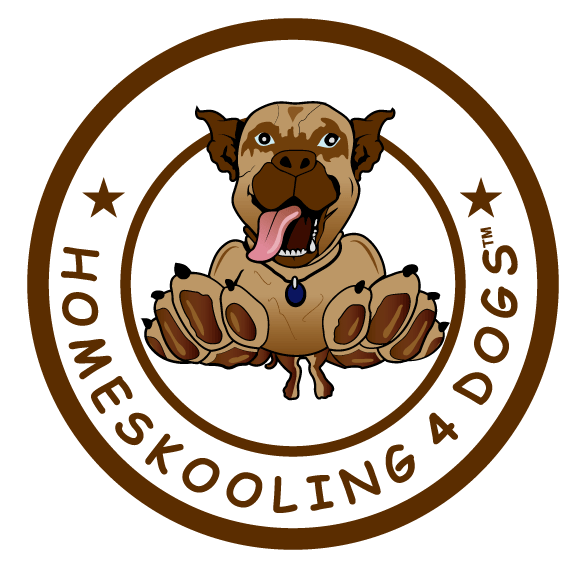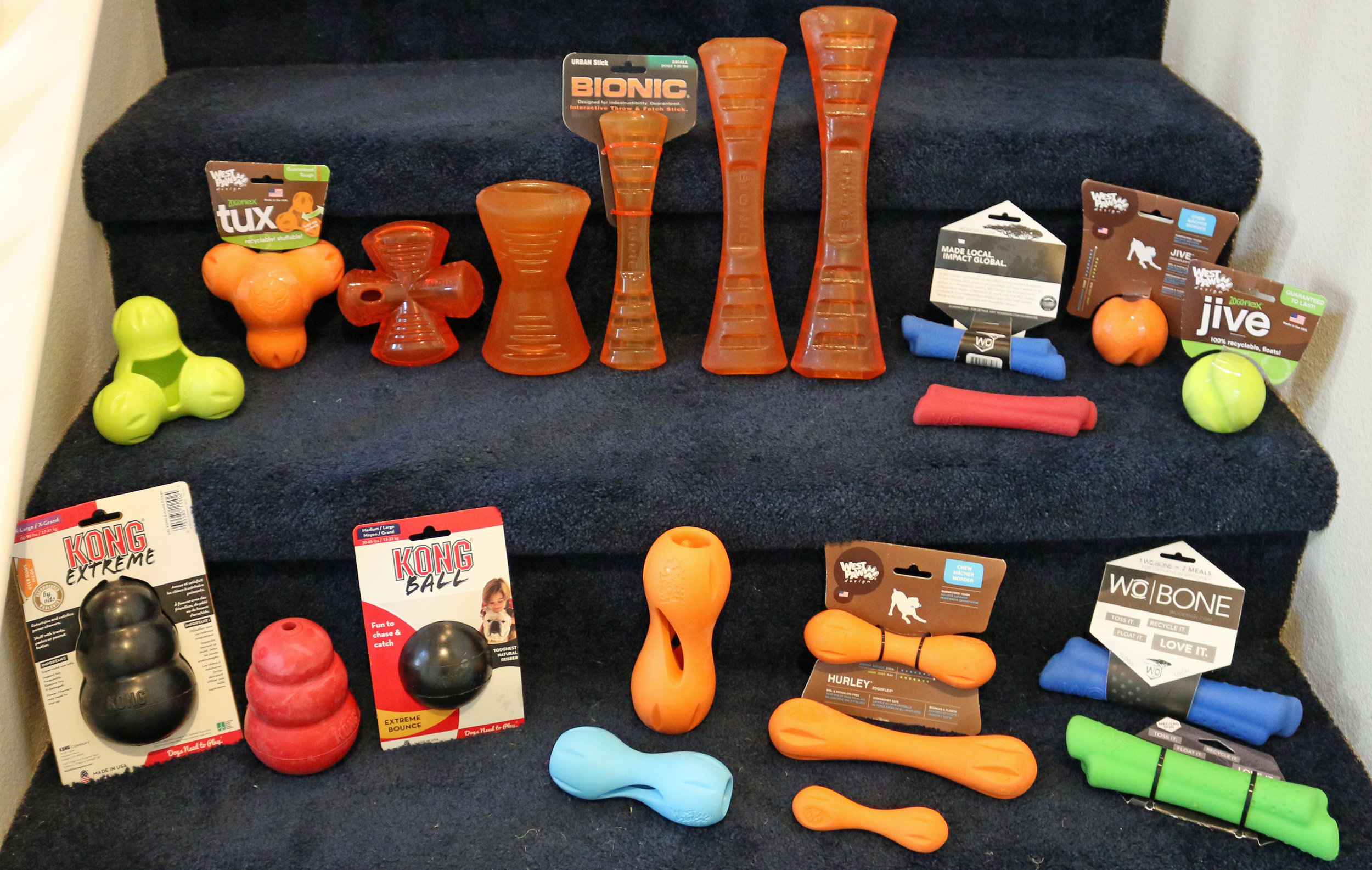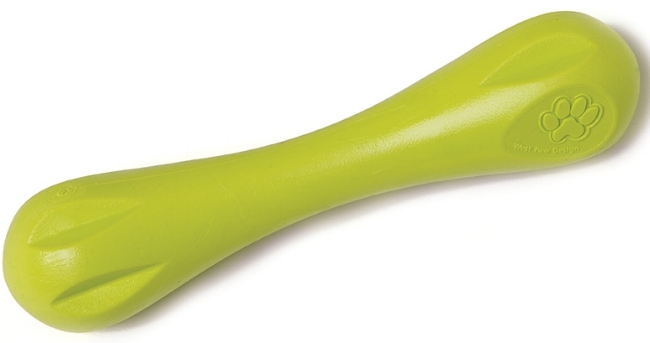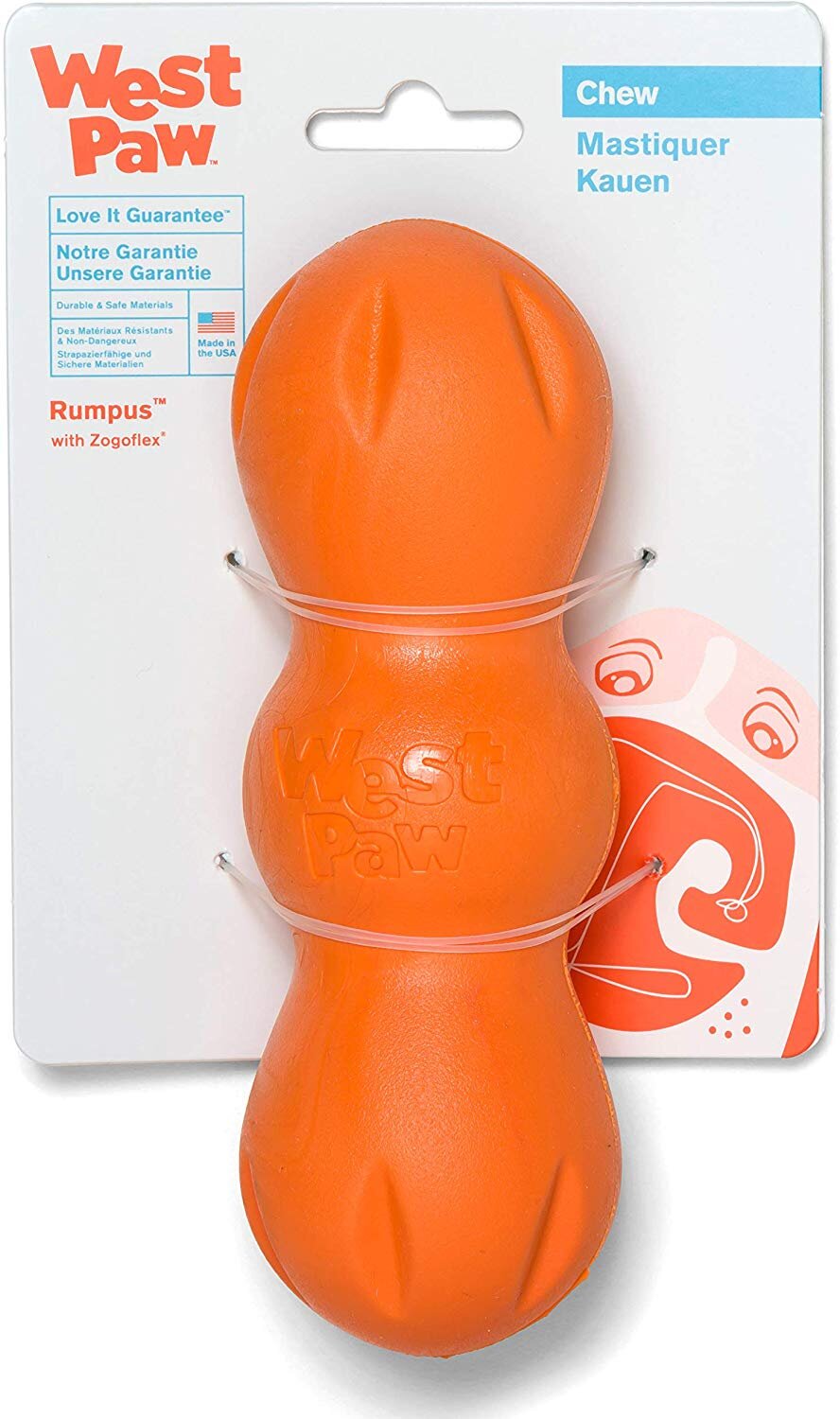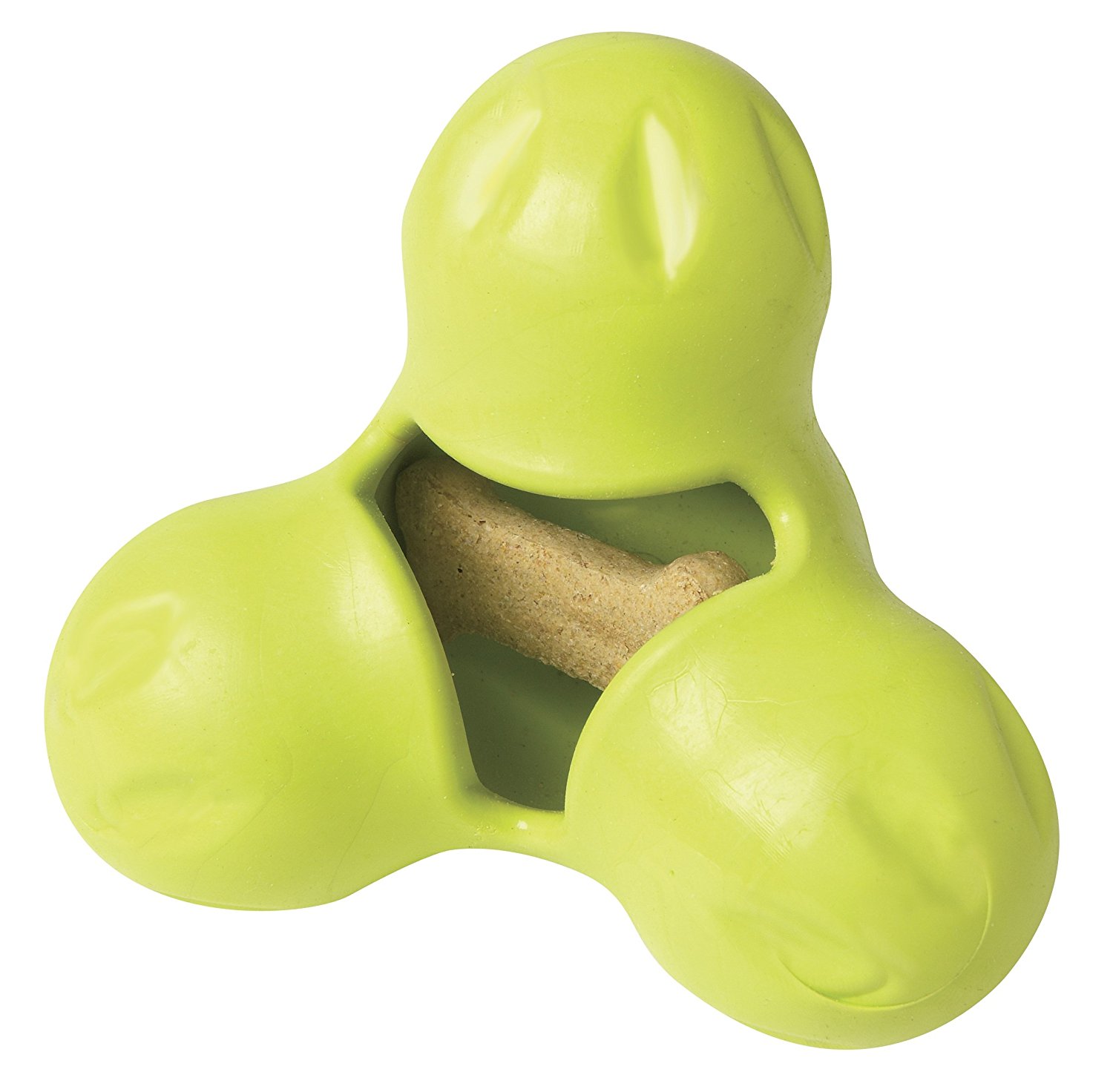DOG TOYS
Chew Toys
Toy for Food Treats & to Entertain
Toys for Games
Tug Toys
Breed Specific Toys
Cleaning Dog Toys
Toys can be as important to a dog′s development as they are for children. Toys can do more than keep pets entertained and occupied. Properly selected and used, they can assist dogs with social and emotional development. Games with toys helps strengthen social bonds, and exercise both minds and bodies. Dogs of all ages should be taught that toys are for playing and putting their teeth on, not other dogs, animals, or humans. (Even in play) Starting at 8-weeks with a puppy we want to move from bite inhibition (soft bite) to teaching no bite at all. What your puppy needs to learn now is how to interact with, and around other dogs and people in an appropriate social manner.
The most important game to play and teach our dogs is retrieving/fetch. (See breed specific toys) Since retrieving contains an element of chasing which most dogs love to do, we can use toys in our training put some controls on this behavior. We can also use the retrieve game in our training as the foundation for teaching a puppy/dog to come back when he is chasing something. Ideally we want to teach by the time our dogs are 16-weeks. If we get our training right we can place our dog’s instincts under our control. If not, it results in those instincts being completely out of our control.
Games of tug should not be taught until the puppy has learned to share. How do you teach a puppy to share? You teach them to retrieve which is the concept of sharing something with you. This is especially important for owners of guarding breeds like German Shepherds, Dobermans, and even the terrier breeds which were used to kill vermin and we never wanted them to share their kill with us.
To varying degrees most dogs show a desire to compete for resources, food, attention, toys, etc… Many problems can be prevented with the 50-300 rule. The 50-300 rule is simply provide 50-300% more identical toys so resources are not limited. If there are two dogs leave at minimum three identical toys, chews, etc. out. Leaving six out is even better insurance.
I recommend every dog have three sets of toys:
Chew Toys: One set that they have access to all the time to satisfy the need to chew.
Toys to Entertain: Interactive treat dispensing toys to entertain and keep them busy.
Toys for Play: (See breed specific toys) A set of toys that they only have access to when they are playing with their owners.
Breed Specific Toys
Variety is important to many dogs. Leave a number of safe toys out for your dog each day to play with and chew on, but rotate the toys daily so they do not become bored with them.
No toy is indestructible.
Anything the dog considers fun can be a toy.
Toys must be nontoxic, large enough that they cannot be swallowed, destroyed or ingested.
Rotate the toys your dog has access to at least every few days so they do not get bored with them.
Supervisor your dog with any new toy to be sure it is safe for your dog.
Toys For Play
Control the toys and keep them out of sight of the dog
If you are a good playmate your dog will be interested in playing with these with you
All dogs should be taught to play with toys with their owner, specifically retrieving games, a.k.a. ″sharing″
None of these toys hold any magical value. You will need to make playing with your dog fun for your dog. If you have any challenges read Chapter 19 of "The Dog Vinci Code" by John Rogerson.
Chew Toys
A quality chew toy will satisfy your dog’s need to chew and provide a constructive and safe way to occupy his time.
Chew toys may also help with gentle cleaning of the teeth and gums.
Many can be stuffed and/or frozen with their food, applesauce/blueberries, grated carrots/chicken, etc...
Treat Dispensing Toys
Start by using a small treat so that they come out easily when the toy is rolled or moved
Nurture your dog′s natural curiosity by providing encouragement as he explores the toy
Slowly roll or move the toy so treats fall out, then encourage your dog to eat the treats
The toy can be used to feed your dog a part of his daily meal if you use kibble
Quality Food Treats
TOUGH TOYS FOR CHEWERS
CHEW TOYS
TREAT DISPENSING TOYS
Treat dispensing toys are a great way to stimulate and engage all your dog’s senses. There are several types available so choose those items that are sturdy, well made, and relatively easy to clean. There are two types; dry kibble treat dispensing, and products that can be used to stuff and/or freeze treats inside. The rubber Kong was probably the first popular dog toy people stuffed with differing foods treats to keep dogs entertained. Kong’s are a longtime favorite for many dogs but some dogs’ loose interest quickly because the treats inside can be difficult to get. My favorites are Qwizl’s, and Tux. Although nothing is indestructible with aggressive chewers these toys are among the best, made in the USA and are easy to clean. Dog toys help to reduce boredom, stress, and frustration for dogs and puppies. Safe dog toys assist with reducing stress, anxiety, and frustration and behaviors such as, barking, jumping, spinning, chewing, among others. Boredom and loneliness are sources of excessive stress for both dogs and cats. If your dog has destructive chewing also check this page for additional help: Chewing & Destructive Behavior
Treat Dispensing Toys
• Start by using a small treat so that they come out easily when the toy is rolled or moved
• Nurture your dog′s natural curiosity by providing encouragement as he explores the toy
• Slowly roll or move the toy so treats fall out, then encourage your dog to eat the treats
• The toy can be used to feed your dog a part of his daily meal if you use kibble
• Use a quality freeze-dried meat treat.
